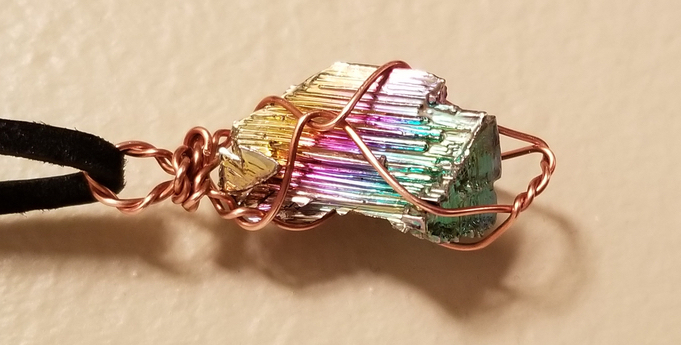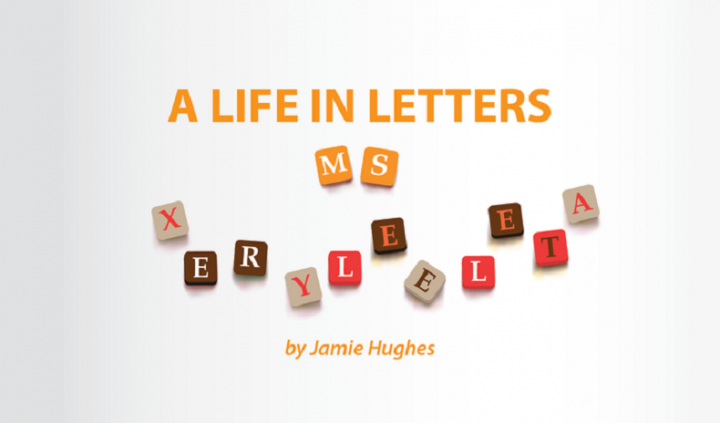I Am So Much More than My MS
Written by |

(Photo by Jamie Hughes)

Every personality test and trait indicator quiz I take tells me the same thing: I’m a polymath. Basically, it’s a fancy Greek word meaning “a person of wide-ranging knowledge or learning.” I take delight in gathering interesting facts or stories. I take pleasure in learning for learning’s sake. (Hence, the copious hyperlinking that is going on in this post!)
That’s why Sam Kean’s book, “The Disappearing Spoon: And Other True Tales of Madness, Love, and the History of the World From the Periodic Table of the Elements,” was such an absolute delight. I didn’t understand all of the science — I am a devotee of the humanities, after all — but I got enough. And the facts in this book changed the way I view things, many of which have nothing to do with science.
It’s the reason I now wear a chunk of bismuth around my neck. It may seem silly, but the metal reminds me that as an MS patient, I’m so much more than my disease.
Bismuth (Bi), element number 83 on the periodic table, is not sexy like gold or platinum. Nor is it scary and radioactive like uranium. In fact, for centuries, it was confused with lead and tin because it was the same color. At first glance, it doesn’t seem like there’s much to admire about this humble, little collection of atoms.
However, variations in the thickness of the oxide layer that forms on bismuth’s surface cause different wavelengths to appear, which creates a rainbow effect. Also, it grows in a spiral step structure because it has a higher growth rate around the outside edges than on the inside edges. I mean, just look at it! It’s a gorgeous, glittery, M.C. Escher-esque creation. But it’s not what’s on the outside that matters, right?
What I like about bismuth is that it is so much more than it seems. It’s a bundle of contradictions, really. A lot like me. A lot like you, fellow MS warrior.
For instance, it’s located in the “poisoner’s corridor” of the periodic table (surrounded by elements like lead, thallium, mercury, polonium, and radon) but is nontoxic. In fact, it actually has the power to heal. That’s why it’s the “bis” in Pepto-Bismol.
Also, bismuth forms a crystalline structure similar to water when it freezes; it is one of five elements that expands when frozen rather than shrinking.
It’s the most diamagnetic metal on earth. Essentially, it resists being magnetized — a trait known as the Hall effect.
It’s one of the brittlest metals on Earth, but also one of the stablest elements, and it has one of the longest half-lives of any isotope. It may crumble, but it’s not going anywhere.
I love that bismuth refuses to conform. Unlike its periodic neighbors, it heals rather than hurts. It resists natural forces and processes and goes its own way. And though it may fall apart outwardly, it keeps on keeping on, molecularly speaking. The “rules” say bismuth should look a certain way, act a certain way, exist a certain way. But does it? Heck no!
There are people who tell me I must “look sick” if I use an accessible parking space or that I can’t be sick because I “look so healthy.” There are people who firmly believe I shouldn’t take a job or enjoy certain activities because that’s not for someone with a condition like mine. For instance, someone said I probably shouldn’t adopt children because I might get worse and fail them as a mother. No, I’m not joking.
Because they are “well” or “normal,” certain people think they call the shots; that it is up to them to set the parameters of my life because I live with a disease that (for now) is incurable. But they don’t get to decide who I am, and neither does my illness. I don’t want to conform to some pathetic stereotype or fulfill people’s expectation of what a “sick person” looks like. It’s not my job to make people feel relieved because I’m ill and they aren’t. I’m not here to accept pity (dressed up as kindness or sympathy) to make people feel better about themselves. To accept these limitations diminishes me as a person and makes me “less than.”
Still, if I’m honest, there are days I forget this fact. Days when I’m tired or discouraged or afraid and lose sight of my full personhood. That’s why I’m a proud polymath who will keep reading and learning and looking for the lessons who wears a little hunk of bismuth. It writes its own narrative, and so do I.
***
Note: Multiple Sclerosis News Today is strictly a news and information website about the disease. It does not provide medical advice, diagnosis, or treatment. This content is not intended to be a substitute for professional medical advice, diagnosis, or treatment. Always seek the advice of your physician or other qualified health provider with any questions you may have regarding a medical condition. Never disregard professional medical advice or delay in seeking it because of something you have read on this website. The opinions expressed in this column are not those of Multiple Sclerosis News Today or its parent company, Bionews Services, and are intended to spark discussion about issues pertaining to multiple sclerosis.






Laurentiu Todie
Fun article for several reasons, one of which is the imminent conclusion that art and science are of the same cloth.
Jamie Hughes
Indeed they are! All disciplines cross, and each one informs the other more fully.
Debra Hoffstatter
I am moved by all your articles. I need to start writing again. It's been a rough winter. I ask myself why and where am I and how did I lose the last 6 months. A big weird thank you goes out to my latest MS exaserbation. But I am moving, albeit slow, I am aware of so many great things, so yes, really appreciate those things probably 100 percent more than those not facing an illness. So while I am angry my identity is being stolen, I am slowly getting it back! I am stronger than my MS thinks!
Jamie Hughes
Debra, thank you so much for such a kind and wonderful comment. I sometimes feel like I'm writing into a void, but when I hear from someone like you, it helps so so much! Keep fighting, soldier. You got this...and there's a whole host of people out there rooting you on!